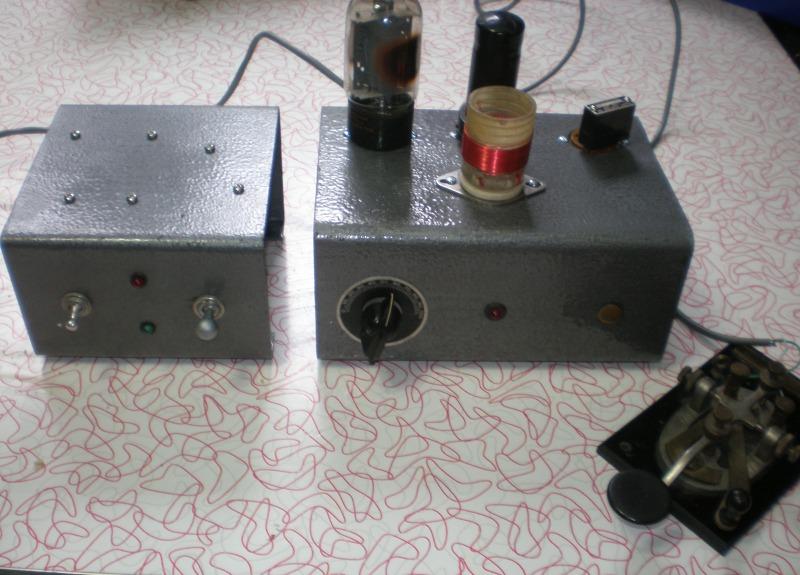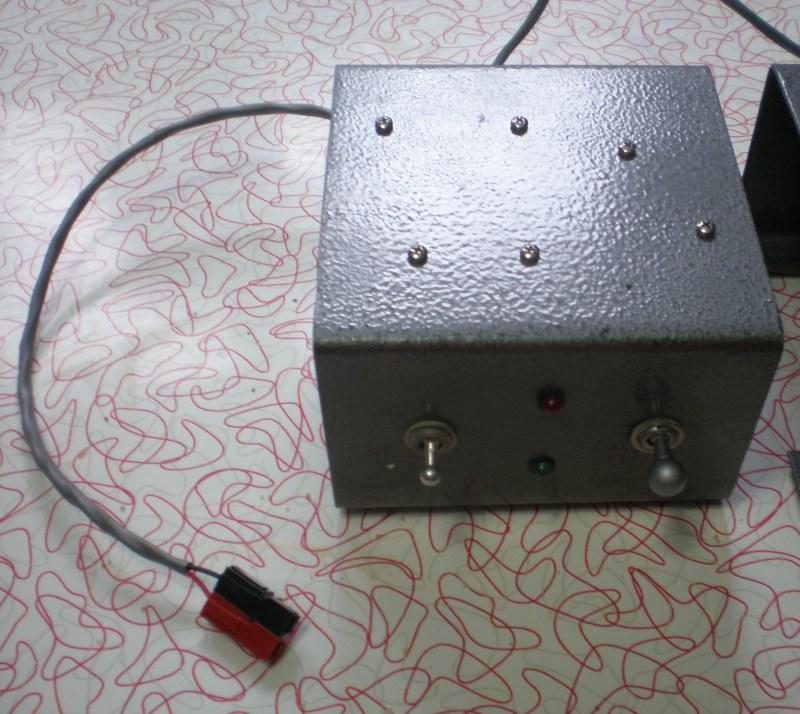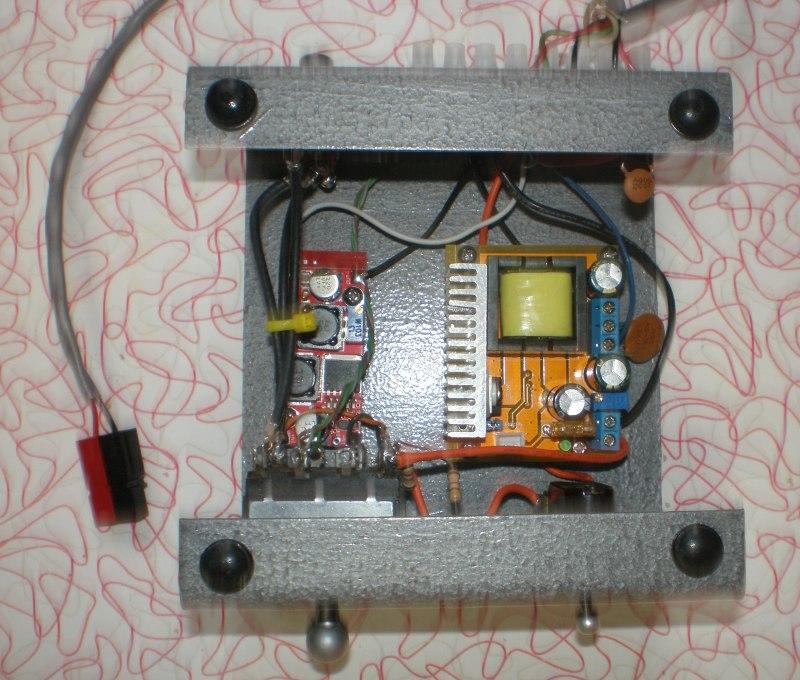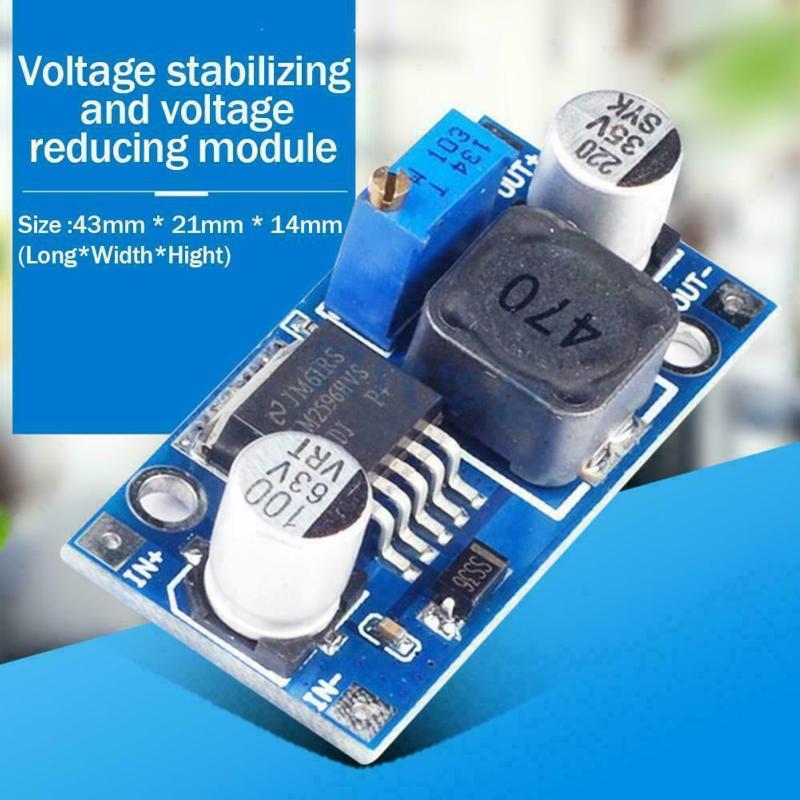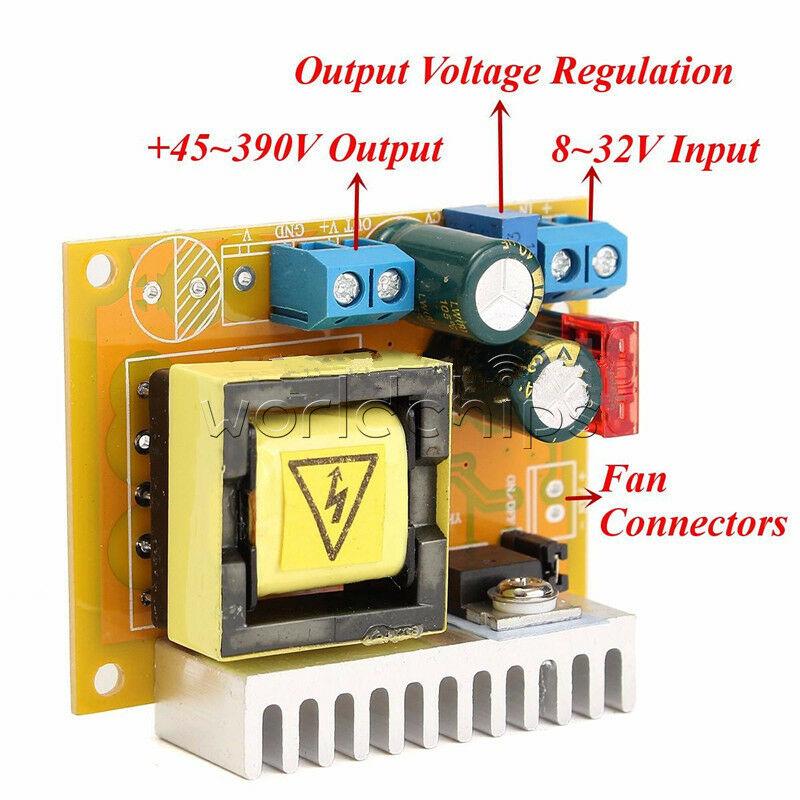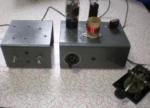
Posted By: Robert Nickels (ranickels) Posted: 05/21/2021 Vintage Ham Radio 05/21/2021 |
6AG7-6LG Novice TransmitterClassic circuit with some modern twists |
|
There's a good chance that more homebrew ham transmitters have been built using a 6L6 than any other tube, and when combined with the superior performance of the 6AG7 oscillator, it's a hard combination to beat (click here for an explanation of the 6AG7's benefits) I'll be adding more info about this project soon, but one of my goals was to reproduce what was a budget-friendly transmitter in the old days with parts that are available today. One way to push the cost of any homebrew tube project into triple-digits is to use a new power transformer and choke. Back in the middle of the previous century that was the only way to obtain high voltage safely of course, and inexpensive surplus and a range of "iron" from several major manufacturers that supplied the mainstream radio and TV industry kept prices down even for one-off hobby projects. Today, those manufacturers are most all gone, and those who remain must charge 21st century prices due to today's volumes and costs. Fortunately modern switchmode technology provides alternatives that not only work well (better, in fact) but actually cost a fraction of what the equivalent functionality did "back in the day". I'll expand on this in a future article, but the basic building blocks are: 1. An LM-2586-based boost-buck DC-DC converter. These modules take any voltage 4V ~ 35V in and provide an adjustable output voltage of 1.23V ~ 30V at a maximum current of 3A. They do so with 92% efficiency and cost $1, proving my contention that high efficiency power conversion is truly one of the wonders of the modern age. This module converts 12 VDC from an AC power supply or battery to the 6.3V needed for the tube filaments 2. Another switching DC-DC boost converter to produce up to 390VDC for the B+ from 12 VDC input. These are commonly referred to as "ZVS" for zero voltage switching converters and use an LT-1243 controller and MOSFET to achieve 88% efficiency. While advertised as 40 watt modules, the output voltage does drop off at higher current levels, however they are very usable for tube circuits requiring up to 100mA or so. More on this later. A number of advantages flow from the modern approach, aside for cost: 1. Filament and B+ is derived from a single 12 volt source. This can be a linear or switching power supply (very inexpensive) and since efficiency is high (typically 90%) only a few amps are required. This also makes it easy to operate devices from a portable or car battery. 2. Safety is improved because the high voltage is only present when enabled. In a transmitter, this occurs when the PTT is keyed or in transmit mode, so there is less chance of accidental contact with HV and because storage capacitors are smaller at the high switching frequency, less energy is stored after power is switched off. 3. Weight is far less than with conventional transformers and chokes. High efficiency also reduces heat. 4. The output is regulated. This can be done with conventional transformer supplies of course, but at the cost of added weight, size, cost, and complexity. Regulation comes free as it's inherent in the SMPS design. 5. The output voltage is easily adjusted to any desired voltage from 50 to 390 VDC. 6. Filaments operate on DC rather than AC which eliminates any concerns with AC hum pickup. 7. Switching is simplified because is is never necessary to switch the high voltage with the potential for arcing, all that's needed is to switch the 12V input voltage, or in some cases, use an Enable pin. Either way, the SMPS is much easier to integrate with a microcontroller, if that is desired.
Yes, there are drawbacks - or at least one: RFI/EMI. The switching frequencies are typically in the 50-300 kHz range (150kHz for the filament and 75 kHz for the HV modules referenced here). Switching transients can appear on the output and external filtering may be required to completely eliminate them. I typically view the module no differently than any other noise source, all I want is pure DC coming out so a LPF with a low cutoff will do the job. Remember that EMI can be conducted along power lines as well as radiated, so attention may need to be given to shielding as well as bypassing. The only way to gain familiarity with the characteristics of these devices around radio equipment is to experiment with them. It's worth bearing in mind that similar SMPS are used in many vacuum tube audio preamps and the like where noise would be very apparent, so it can be mitigated successfully. In my case there wasn't a noticeable issue in my initial testing. Becoming competent in EMI/RFI mitigation is unfortunately one of the skills needed to play with radios in today's electrical environment where we (hams) are much more likely to experience interference from other devices than to be the cause of it, as in the old days! |
|
Related Images
Click on the image title or on the image itself to open the full-sized image in a separate window.Latest Articles
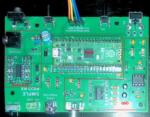
Technical
Posted: 01/29/2025
Comments: 0 |
Pico Rx performance - Excellent performance on 630m WSPR
The Simple Pico Rx is my minimalist implementation of Jonathan Dawson's "Pico Rx" at 101things: https://github.com/dawsonjon/PicoRX In this basic form the receiver consists of a Quadrature Sampling Detector (QSD aka Tayloe) and the Pico2 MCU which handles all DSP functions. There are NO front-end filters, the only bandwidth limitation comes from the tracking filter... READ MORE |
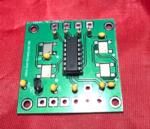
Crystal Replacement
Posted: 08/226/2024
Comments: 0 |
Making SMT "no lead" parts easier to use
SMT is the future - but how can we actually use parts without leads? ... READ MORE |
|
Crystal Replacement
Posted: 02/38/2024
Comments: 0 |
How good can a crummy receiver be?
Hundreds of different simple SDR receivers have been designed around Dan Tayloe's Quadrature Sampling Detector or QSD. Mine add nothing to the state of the art, and in fact subtract things, as I like minimalist solutions and the QSD is right in that sweet spot. Following the evolution of Tayloe's design I delete the resistors in series with the sample lines for inst... READ MORE |

Technical
Posted: 02/37/2024
Comments: 0 |
What's in a number (3253)?
The FST3253 dual four-to-one mux/demux IC has long been used as a "Tayloe Detector" or QSD (and QSE) in low-cost SDRs. They provide incredible performance for such a simple circuit, converting RF to baseband IQ with low loss and the ultimate in simplicity. Unfortunately the original FST3253 part has become obsolete and while substitutes are available, this is where the... READ MORE |

Vintage Ham Radio
Posted: 02/32/2024
Comments: 0 |
The Stancor 10P Transmitter
There weren't really many commercial transmitters in the 1930s as most hams built their own. But many of the ones that were offered came from the transformer companies who had two chances to profit. First, from those who would buy the kit, and two, from those would would see it in the (free) booklets the companies provided to their distributors who would then sell the iron to ham... READ MORE |

Vintage Ham Radio
Posted: 12/355/2023
Comments: 0 |
The Care and Feeding of the EF Johnson Courier amplifier
The EF Johnson "Courier" is a grid-driven amplifier using two 811A tubes. Switching is provided for operating in either class C for CW or as a class B linear amplifier for AM or SSB. Rated power is 500 watts input for CW, 500 watts PEP input for SSB, and 200 watts input for double-sideband AM with carrier. Since all amateur power levels were meas... READ MORE |

Historic
Posted: 11/329/2023
Comments: 0 |
TV Duplexer
Some things are interesting, even if totally useless nowadays. Such is the case with the Philco 426-3034 Crossover Kit for UHF TV. What the heck is that? Well, back in the late 50s, UHF television stations operating on channels 14-83 started to appear in many areas of the US where viewers had a VHF-only TV antenna, and in many cases an externa UHF converter was... READ MORE |

Crystal Replacement
Posted: 11/327/2023
Comments: 0 |
Replacing failed crystals
For decades, quartz crystals were used everywhere a stable frequency source was needed, even in some applications that depended on overtone (harmonic) behavior into the VHF range. These crystals were less stable and more dependent on circuit parameters that fundamental types and thus more problematic. Such was the case with the 94 MHz crystal in the 2 meter converter ... READ MORE |

Historic
Posted: 11/315/2023
Comments: 0 |
My Own Ham Radio Story by W9RAN
Everyone has a story of how they got involved in ham radio - this is mine. It started much earlier, including receiving a Knight Kit Span Master shortwave radio for Christmas in about 1963, at age 12. I'll never forget the night my dad and I finished building it and I wanted to try it out. It came with a 50 ft. antenna which was still coiled up - but ... READ MORE |

Technical
Posted: 09/267/2023
Comments: 0 |
Hot to simulate vacuum tubes in LTSpice
LTSice is a powerful simulation tool that is provided free by Linear Technology Corp. It comes with a complete library of passive and common analog solid-state components but if you want to use it to simulate vacuum tubes, it doesen't work as-is. Even though triode and pentode symbols can be found in the "Misc" folder, they are just schematic symbols and... READ MORE |
